The Sony RX100 III Review. The best pocket camera ever?
You can buy the RX100 III at B&H Photo HERE or Amazon HERE.
Man oh man oh man! Sony is on fire and hotter than ever (Sony A7s just recently and now this) and while the RX100 III is sort of older news already, as in, it has been released and in the hands of many shooters for a while now it is just now that I have been able to sit down, relax, and write down my thoughts about it after using it for 2-3 weeks. As many of you know, the RX100 III is the latest and greatest version of the Sony RX100, a true pocket rocket of a camera. In my review of the original RX100, I praised it up and down for what it was, what it could do and how it could do it, all while fitting in a front pocket. You can read that review here and to be honest, the original is still a damn fine camera today and can be had at a much better price than when it was launched.
After the original RX100 came the RX100 II and after I had one for 2-3 weeks I found it was NOT enough of an upgrade to the 1st version to warrant the expense. With version II Sony added the capability to use an external EVF and improved the sensor slightly, but for me, I preferred the original sensor. Odd huh? Because of this, I never really reviewed it. Instead I took a quick look at it HERE.
Now with version III Sony has given us a pop up EVF which is absolute GENIUS! It stays hidden until you want to use it, and then you flick it up with a switch on the side. It pops up just like a pop up flash would and then you pull it out to use it. It is a very welcome addition to the camera and for me, makes the upgrade worth it right there! But Sony did not stop there as they also changed out the lens, which is now a 24-70 equivalent ranging from f/1.8 to f/2.8. Even at 70mm you can stay at f/2.8, which will allow more light to come in. Faster is always a good thing when it comes to aperture. So while we lose some of the reach of the Version I and II RX100, we gain speed and IMO some slight improvements to the lens quality.
We still have the same RX100 size, tilt LCD, selfie mode, and all of the usual Sony features and gimmicks. The lens barrel rotates and can control just about anything you want it to. I have it set to aperture but you can also set it to control color mode, or even ISO. The camera is a VERY polished and “finished” type of design. Smooth jpeg files as well with plenty of pop for a small sensor camera, and do remember that this is a small 1″ sensor camera that is not meant to replace a larger sensor mirrorless or DSLR as it does have limitations when compared to its larger cousins.
One of the 1st shots I snapped in JPEG with the RX100 III. Our new puppy “Olive” – Was in some weird mode so high contrast..
–
One in High Contrast B&W Mode (JPEG) – click for larger. Focus was on the hair (of the wig) in front of his eye. Even with the small sensor you get some shallow DOF at the widest 24mm setting.
Since the RX100 III is basically an RX100 with an improved sensor, new lens and new EVF it is still at its heart, an RX100. Same idea, same body, same concept, same shooting experience. So to read about all of that, click here to read what I said about the original in regards to all of that. In use, the new III is not only just as fun, fast and slick to use as the I and II, but even more so. While it may be small for some hands, there are a few grip options out there including Sony’s own grip made for the camera. There are also cases, and my fave is the one made by Gariz, which you can see below and order HERE. It’s really an attractive and useful accessory for the RX100 III and makes the camera look “luxury”. Much like a Leica 😉 If it had a red dot…Hmmmm.
Out of the Box impressions
The RX100 III arrived in a TINY cute Sony box and when I opened it I was welcomed by a familiar shape and design. As I stated before, the RX100 III is the same shape and design as the original, but in its III form it is like a “Super RX100”. In fact, I will call it the “Super 100” from here on out as I feel it is so jam-packed with features that PHOTOGRAPHERS want. Nice fast Zeiss zoom, pop up EVF, swivel screen, fast and accurate AF, slim design, high quality video, etc. After taking it from the box I charged inserted a battery (I have six of them from my previous RX100) and popped the camera in my pocket. I shot a couple of frames at a KISS concert (though had seats off to the side) and around town during my day-to-day errands. I shot JPEG 100% of the time.
For me, a camera like this should be able to do JPEG well, and the RX100 does indeed do it well. For me it offers a fun factor and stress free experience, which is good. While it does not compete with a DSLR or one of the larger sensor mirrorless cameras it does blow away any other point and shoot style camera out of the water. Forget Canon, forget Nikon and yes, this one even smokes any Olympus compact I have tried. This “Super 100” is on another level from any other P&S and is still the best there is in this area. It has class, style, grace and it performs without breaking a sweat. The build feels solid and nothing about it feels cheap or hollow. I like this.
–
Using the selfie mode, the LCD flips up so you can see it and then the camera counts down – 3-2-1 on the screen. This is a useful little mode that sounds silly to some, but I used it 4 times in my 2 weeks with the camera.
–
Did a similar shot in my review of the RX100 I so I figured I would do the same here, why not? Excuse the dirty mirror.
This “Super 100” (RX100 III) is perfect for an EVERY DAY camera. Phone? Naaaaaaa.
Do you want something of high quality, something that is small and hassle free to carry yet offers you a huge improvement over your cel phone for images? You want ease of use, HD video, a fast lens and great low light performance? Look no further my friends as the RX100 III can do it all, and it does it so much better than your phone. While the most popular camera today is the iPhone, there are still those out there that care about quality, and I am one of them. There are those who want a viewfinder, who want the experience that once upon a time came with photography. A phone does not give you that experience and while it may be capable and easy, it is not like using a real camera.
For me, memories are meant to be captured and preserved. Not everyone wants to carry a large DSLR or mirrorless but something like this RX100 III takes all of those issues away. It can take nice quality photos, without using a flash, in almost any light. While it will not be an “in the dark” shooter, it will give you so much better results than your phone in 99% of situations.
BTW, Every image in this review was shot as an OOC JPEG.
–
The image below was shot by Bill Goodman, a local Phx photographer who was checking out the RX100 III when I brought it to Az Hi Fi
The color, the smooth files and the dynamic range are fantastic for what this little guy is. I was finding that the “clear” JPEG setting was giving me rich and punchy results that I liked. The way the RX100 III handles light and shadows can indeed be dramatic and very pleasing to the eye…it’s funny but there are times when the images I took with the RX100 III looked better in the final file over my Leica M 240 for resized web images! The color and smooth look is a signature of the RX100 series. With only a 1″ sensor it punches well above its weight class, for sure. When compared to a Nikon V1 or V2 or V3, the RX100 series presents images in a smoother way, reminding me of a larger sensor without the grit.
Dramatic color and tones…JPEG
–
Shot in CLEAR JPEG mode..which is what gives it the look you see…
TECH SPECS
Below are the tech specs of the RX100 III, or the Super RX100 🙂 I highlighted in BOLD the features that are worth mentioning and remembering as to me, these are what make the camera.
20.1MP 1″ Exmor R BSI CMOS Sensor and BIONZ X Image Processor
The large 20.1 megapixel 1″ Exmor R CMOS sensor features backside-illuminated technology to enhance its low-light capabilities to a native ISO 12800 while still retaining vivid clarity. Using Sony’s Column A/D Conversion and area-specified noise reduction, images are rendered with impressive quality and smooth gradations between tones and colors due to the marked, intelligent reduction in apparent noise. Further enhancing imaging quality, detail reproduction technology works to increase the fine detail rendering capabilities for a more three-dimensional, realistic image quality while diffraction-reducing technology helps to enhance the optical qualities of the lens by suppressing diffraction that is common when working at smaller apertures. Additionally, aiding working in difficult lighting conditions, the sensitivity can be extended to an effective ISO 25600 when using Multi-Frame NR, which records and composites sequential images in order to attain high sensitivity with minimal noise.
Also benefitting the image quality, as well as overall camera performance, is the BIONZ X image processor, which provides continuous shooting up to 10 fps in Speed Priority Mode, 2.9 fps shooting with single-shot AF, a shutter lag time of just 0.008 sec., and a start-up time of 1.6 sec.
Zeiss Vario-Sonnar T* Lens
The built-in Zeiss Vario-Sonnar T* lens provides a 35mm-equivalent focal length range of 24-70mm, covering wide-angle to portrait length perspectives to suit working in a wide variety of shooting conditions. An f/1.8-2.8 maximum aperture benefits working in difficult lighting conditions throughout the entire zoom range and also enables greater control over focus placement for shallow depth of field imagery, which is further accentuated by a seven-blade diaphragm to produce a smooth out-of-focus quality. Nine aspherical elements, including two cemented AA (advanced aspherical) elements, are incorporated into the lens design to minimize chromatic aberrations throughout the zoom range to benefit creating sharp, clear imagery. The lens also features a Zeiss T* anti-reflective multi-layered coating to help minimize lens flare and ghosting in order to produce imagery with rich contrast and color neutrality.
Benefitting the 2.9x reach of this lens, as well as supporting working in difficult lighting conditions and with longer shutter speeds, is Optical SteadyShot image stabilization, which helps to offset the effects of camera shake. When recording movies, the image stabilization utilizes an Intelligent Active Mode, which also uses electronic image stabilization to compensate for both camera shake and rolling shutter effects.
Additionally, a neutral density 0.9 filter is incorporated into the camera’s design, which provides a reduction of three stops in exposure to enable working in bright conditions with wider aperture settings and for greater control over how subject movement is rendered.
Direct OOC color from the RX100 III JPEG – this one was shot in VIVID mode.
Camera Design
Within the compact design of the RX100 III is both a high-resolution electronic viewfinder and a large rear LCD monitor. The 0.39″ 1,440k-dot SVGA OLED Tru-Finder EVF provides a bright, clear means for eye-level monitoring, which is well-suited to critical compositions and working in bright conditions. It features 100% frame coverage, a unique pop-up mechanism, and a Zeiss T* coating on the optics to reduce surface reflections and flare for enhanced visibility. Alternatively, a 3.0″ 1,229k-dot Xtra Fine LCD screen is also available and features a tilting design (180° up, 45° down) to benefit working from high, low, and front-facing angles. WhiteMagic technology has been applied to the LCD’s design, too, to increase effective brightness for easier viewing in bright lighting. When working with both viewing means, an integrated eye sensor automatically switches between both the EVF and LCD. Additionally, the camera can be turned on simply by popping the EVF into place.
For intuitive, SLR-like adjustments over a variety of camera settings, a manual control ring surrounds the lens and features a smooth, click-less design for quick and quiet changing of settings. The ring can be assigned to control a variety of features, at different values, such as zoom, aperture, and Picture Effects. A step-zoom feature can be utilized, too, to allow instant switching between commonly used focal lengths.
Full HD Video Recording
Full HD 1920 x 1080 movies can be recorded in the high-quality XAVC S format, which uses a Long GOP (Group of Pictures) structure, MPEG-4 AVC/H.264 video compression, and linear PCM audio compression, and saves within the MP4 container format. These compressed files permit recording times up to 29 minutes while allowing 50 Mbps video recording at 1080/60p, 1080/30p, 1080/24p, and 720/120p frame rates. Full-pixel readout helps to minimize any artifacts in recordings due to the ability to utilize data from the entire image sensor, which ultimately results in smooth, high-resolution recordings. Movies can also be recorded in the AVCHD format, which is ideal for HDTV playback and Blu-ray disc burning, and the MP4 format, which is ideal for uploading online. Additionally, when shooting for two purposes in mind, dual recording is possible in different formats-XAVC S and MP4 or AVCHD and MP4-for the ability to instantly share footage while also having a higher quality version for subsequent editing.
Benefitting advanced video applications, the RX100 III also supports clean HDMI output for recording uncompressed video via an optional external recorder and for real-time viewing on an accessory monitor. Recording frame rates include 24p, 60p, and 60i, and the shooting info display can be turned off during recording for a cleaner view when utilizing an external monitor.
Built-In Wi-Fi Connectivity with NFC
Built-in Wi-Fi connectivity enables instant transferring of imagery to mobile devices for direct sharing online to social networking, via email, and to cloud storage sites. NFC (Near Field Communication) is also supported, which allows for one-touch connection between the camera and compatible mobile devices, with no complex set-up required. Once connected, the linked mobile device can also display a live view image on its screen and, using Smart Remote Control, remotely control the camera’s shutter release.
Additionally, PlayMemories Camera Apps are also supported via the built-in Wi-Fi connection, and allow you to personalize the camera’s features depending on specific shooting styles. Apps are available to suit creating portraits, detailed close-ups, sports, time lapse, motion shot, and other specific types of imagery.
Other Camera Features
A contrast-detection autofocus system works to acquire precise focus using single-shot or continuous AF modes. When working with moving subjects, Lock-on AF, with wide, center, and flexible spots, adjusts the target frame size as the subject moves throughout the image frame. Face detection and face registration technologies can be used to base focus on recognized faces and Eye AF is also available, which is a detail-oriented focusing function that prioritizes and dedicates focusing performance on a subject’s pupil for sharply-rendered portraits.
For manual focus control, DMF (Direct Manual Focus) and standard manual focus options are available. Benefitting precise manual focus, focus peaking can be used, which highlights edges of contrast within the frame for a more objective means of determining critical sharpness, or MF Assist is available, which enlarges the image for a better view of important details.
A zebra function can be used for easier detection of exposure clipping to prevent overexposure.
A dedicated Custom button permits assigning of one of 42 possible functions for instant, one-touch access to a chosen control.
A digital level gauge detects pitch and roll types of movement and helps to produce even, consistent horizons and plumb verticals.
Smile Shutter technology enables the camera to automatically release the shutter when a subject’s smile is detected
Multi Frame NR records consecutive images at a reduced ISO sensitivity and then composites them into a single image to realize higher effective sensitivity (up to an equivalent ISO 25600) with minimal image noise. Standard image compositing is comprised of four exposures and High image compositing utilizes 12 distinct exposures.
Dynamic Range Optimizer (DRO) works to improve images featuring backlit subjects or scenes with high contrast where details can be lost in the shadows or highlights. This mode can be controlled automatically or fine-tuned using five settings.
Picture Effect modes allow you to apply creative settings and emphasize certain facets of individual images for a richer, more aesthetic picture quality. Posterization (Color/B&W), Pop Color, Retro Photo, Partial Color (R/G/B/Y), High Contrast Monochrome, Toy Camera, Soft High-Key, Soft Focus, HDR Painting, Rich-Tone Monochrome, Miniature, Watercolor, and Illustration modes are available.
Creative Style settings provide control over how the camera processes images based on different predetermined styles: Standard, Vivid, Neutral, Clear, Deep, Light, Portrait, Landscape, Sunset, Night Scene, Autumn Leaves, Black & White, Sepia, and Style Box. Within these settings, contrast, saturation, and sharpness can also be adjusted depending on personal preference.
To extend the effective reach of the optical zoom lens, Clear Image digital zoom can be used to intelligently magnify scenes up to 5.8x at full-resolution. This digital zoom technology uses an intelligent interpolation process to minimize the amount of image degradation in order to produce realistic, high-quality images.
In-camera creation of 4K slide shows is possible for rich playback to ultra high definition televisions. An HDMI port is incorporated into the camera’s design, too, to enable direct connection to HDTVs.
TRILUMINOS Color support is supported to produce rich, natural colors when imagery is viewed on a TRILUMINOS Display.
I enjoyed having 24mm for the wide end…
For me, the new EVF rocks..though it is SMALL
As soon as I saw that Sony included a new pop up EVF in this model I was instantly attracted to the camera. If this one feature was NOT put in then the RX100 III would not have generated as much attention as it has and the camera would not be worthy of the III name, it would be more like an RX100 II. The new pop up EVF if really an awesome and fantastic addition to an already great camera model. The coolest part is that if you do not want to use it then it stays hidden. There are no humps, no evidence it is even in the camera. Without using it no one would even know it was there but flick a switch located on the left side and BAM! There you have it, instant EVF. Now you can put it up to your eye and frame with a viewfinder. The EVF is very small but much better than something you will see in a Leica C for example.
The color is good, the clarity is good and i used the EVF quite often..and I can prove it! See my reflections in the window shots below? Look how small and compact the RX100 III is here! It is small but feels nice and weighty in the hand. The lens offers great clarity and snap and the EVF takes this model over the top.
Is this camera for you? Answer these questions to find out!
The RX100 III is not a cheap camera, in build or design or in cost. It will cost you about $799 to purchase the greatest Point and Shoot of all time, but to see if this is worth it to you, answer the following questions, if you answer yes to ALL then you would benefit from an RX100 III.
1. Do you want a pocket-size travel type of camera to take anywhere?
2. Do you dislike larger and heavier cameras?
3. Do you value QUALITY when it comes to images? As in, IMAGE QUALITY?
4. Do you like having a convenient and fast zoom?
5. Do you like to shoot hassle free, and even shoot JPEG?
6. Do you often want the “best” you can get to avoid making mistakes in purchases?
7. Do you value having an electronic viewfinder to frame with?
If you answered YES to ALL of the questions then you would not be sorry with the RX100 III. In fact, I guarantee it!
Again, to get what the RX100 III is all about, read my RX100 review. Most of the camera is the same in regards to what it is, what it does and why it is so awesome 🙂 This is a “light” review going over the new features only!
The Pros and Cons of the RX100 III
Pros
- It is small and fits in a front pocket
- Pop Up EVF addition is AWESOME!
- Camera AF is fast and accurate
- Tilt LCD is very useful, even selfie mode
- Build quality is good
- Lens 24-70 1.8-2.8..nice
- pop up flash if needed/wanted!
- HD video is nice with optical steady shot!
- WiFi built in, works well
- Camera apps can be downloaded and used
- Built in ND filter for when the sun gets bright, automatic
- Smooth control dial on lens will control almost anything you desire
- Many cases and grips made by third parties
- Batteries are small, and cheap (third party sellers)
- Best in class image quality and color
cons
- Price of $798 is a little high for a P&S
- Small sensor cannot compete with larger sensors for DR or ISO NOISE
- Not the best for really low light, NR gets aggressive
- Can be too small for some with large hands
- Does not come with dedicated charger
My final conclusion on the RX100 III
The newest RX100, or what I call it, “the Super 100” (RX100 III) is a genuine masterpiece of a point and shoot. It does NOT get better than this in a pocket P&S camera, period. From the design, the build, the EVF, the swivel LCD to the fast lens and punchy color and pop from the files, the RX100 III is the real deal. Once again Sony hits it out of the park here, as they have been doing for 2-3 years now. Sony is surpassing companies like Nikon, Canon, Leica in many areas with some of their recent cameras and they are showing no signs of slowing down or stopping and I think…yes I think..they are just getting started. Call it intuition but I have a feeling something ver special is coming in the high-end arena from Sony..very soon.
Keep in mind, the RX100 III will not and can not replace an APS-C or full frame camera (get the same results) as you just do not get the dynamic range, ISO performance or depth of field possibilities with the smaller sensor RX100 III. What you do get is a camera that is perfect for family use, vacations, world travel, and every day shooting. I have seen images from the RX100 (original) that blew away images I have seen from large DSLR’s, but that was from a VERY talented photographer. It seems that if you really know what you are doing then the RX100 III will reward you with its capabilities. I have noticed the DR is not up there with larger sensors as highlights can get blown, but it is not a big deal or deal breaker. The files from the RX100III are sublime and as good as you can get from a camera of this size.
The lens is fast with a versatile and normal 24-70mm range. With an aperture starting at f/1.8 and slowing down to only 2.8, the camera is highly capable even in low light. The EVF works great and stays out-of-the-way until you need it. It is not the largest thing ever but it works and works well. The design is genius! The RX100 III also has a built in ND filter which will automatically activate when needed. You have all of the Sony usual tricks here as well like panorama, color modes, art modes and intelligent auto modes. This camera can be used by amateur and pro alike. In other words, Sony makes it easy to either pick up and shoot in full auto or delve into the camera and use manual features.
All in all, this is indeed the best pocket camera ever made in the digital world. The price is steep at $798, but if you want the best P&S available and do not want to mess with lens swapping and larger bodies, this is one way to go that will leave you satisfied.
You can buy the RX100 III at B&H Photo HERE or Amazon HERE.
The Sony RX100 III gets my highest recommendation for this class of camera. Way to go Sony!
PLEASE! I NEED YOUR HELP TO KEEP THIS WEBSITE RUNNING, IT IS SO EASY AND FREEE for you to HELP OUT!
Hello to all! For the past 5 years I have been running this website and it has grown to beyond my wildest dreams. Some days this very website has over 200,000 visitors and because of this I need and use superfast web servers to host the site. Running this site costs quite a bit of cash every single month and on top of that, I work full-time 60+ hours a week on it each and every single day of the week (I received 200-300 emails a DAY). Because of this, I need YOUR help to cover my costs for this free information that is provided on a daily basis.
To help out it is simple.
If you ever decide to make a purchase from B&H Photo or Amazon, for ANYTHING, even diapers..you can help me without spending a penny to do so. If you use my links to make your purchase (when you click a link here and it takes you to B&H or Amazon, that is using my links as once there you can buy anything and I will get a teeny small credit) you will in turn be helping this site to keep on going and keep on growing.
Not only do I spend money on fast hosting but I also spend it on cameras to buy to review, lenses to review, bags to review, gas and travel, and a slew of other things. You would be amazed at what it costs me just to maintain this website. Many times I give away these items in contests to help give back you all of YOU.
So all I ask is that if you find the free info on this website useful AND you ever need to make a purchase at B&H Photo or Amazon, just use the links below. You can even bookmark the Amazon link and use it anytime you buy something. It costs you nothing extra but will provide me and this site with a dollar or two to keep on trucking along.
AMAZON LINK (you can bookmark this one)
B&H PHOTO LINK – (not bookmark able) Can also use my search bar on the right side or links within reviews, anytime.
You can also follow me on Facebook, Twitter, Google + or YouTube. 😉
One other way to help is by donation. If you want to donate to this site, any amount you choose, even $5, you can do so using the paypal link HERE and enter in your donation amount. All donations help to keep this site going and growing!![]() I do not charge any member fees so your donations go a long way to keeping this site loaded with useful content. Thank you!
I do not charge any member fees so your donations go a long way to keeping this site loaded with useful content. Thank you!

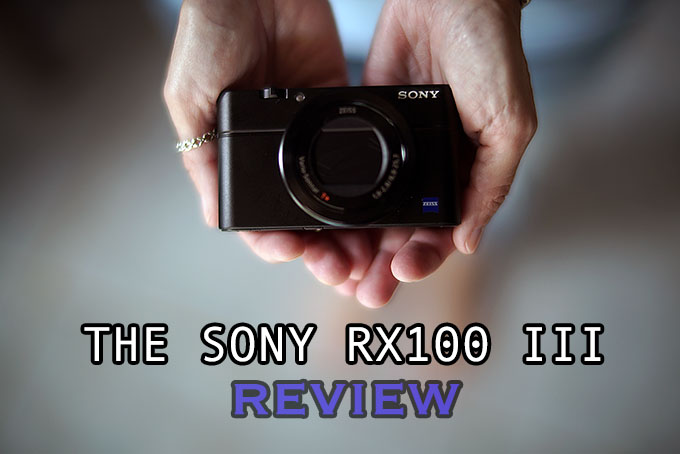
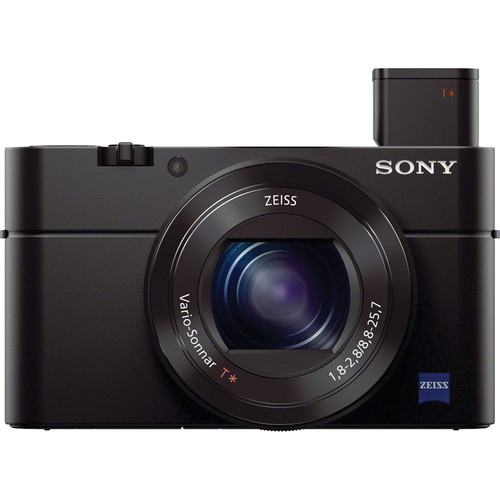
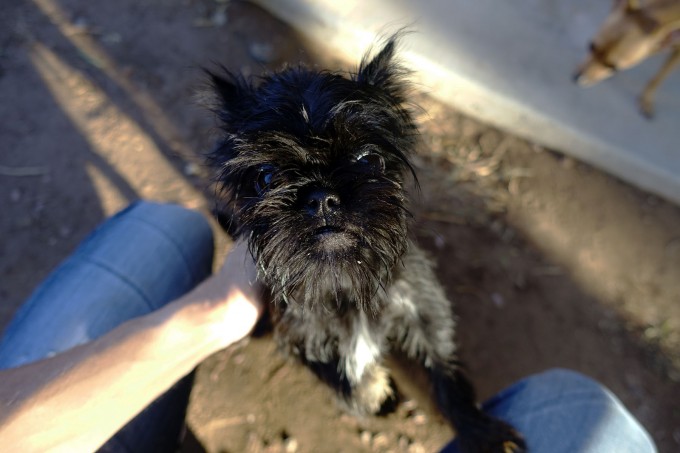
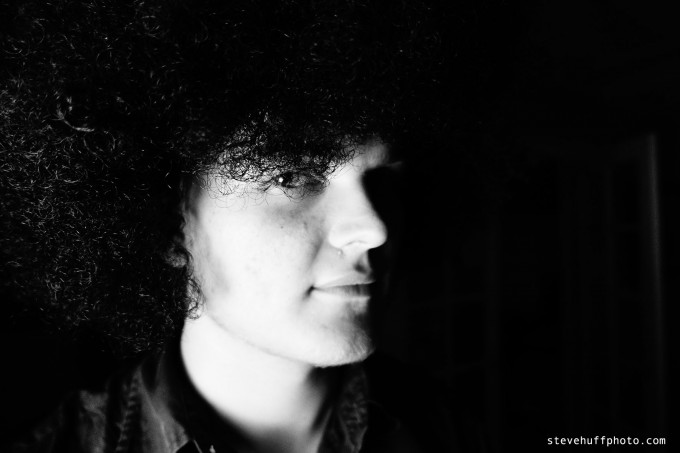
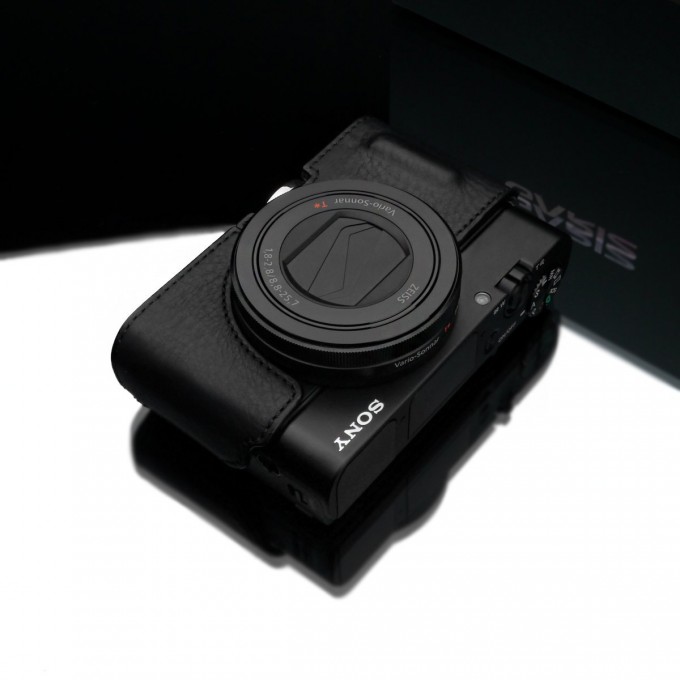
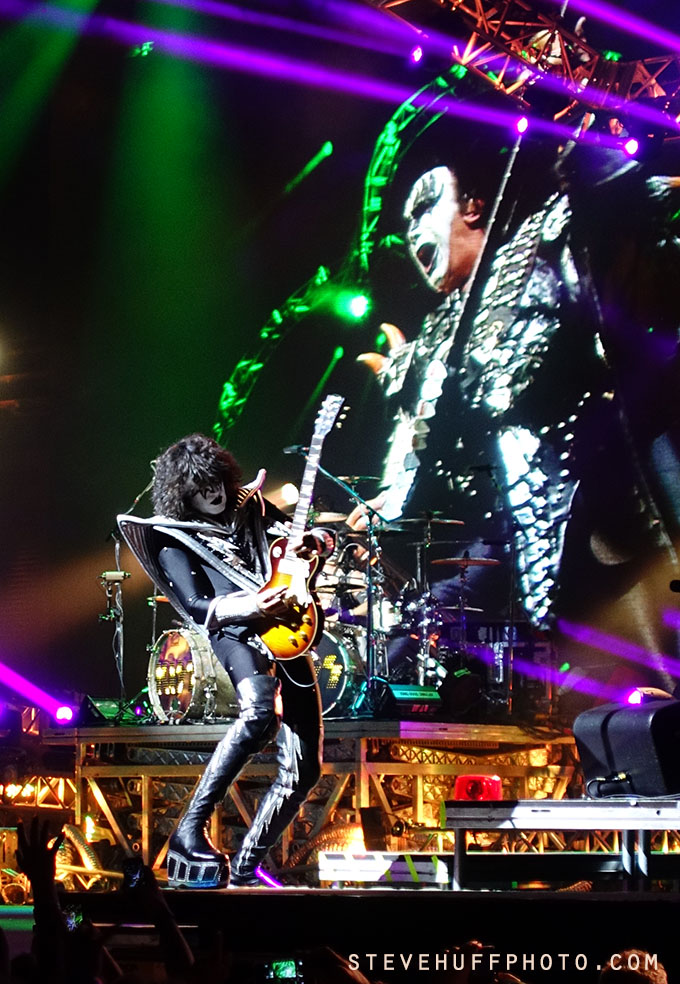
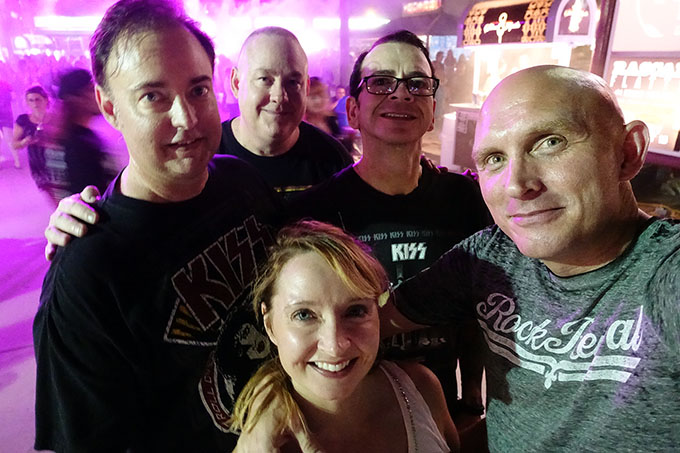
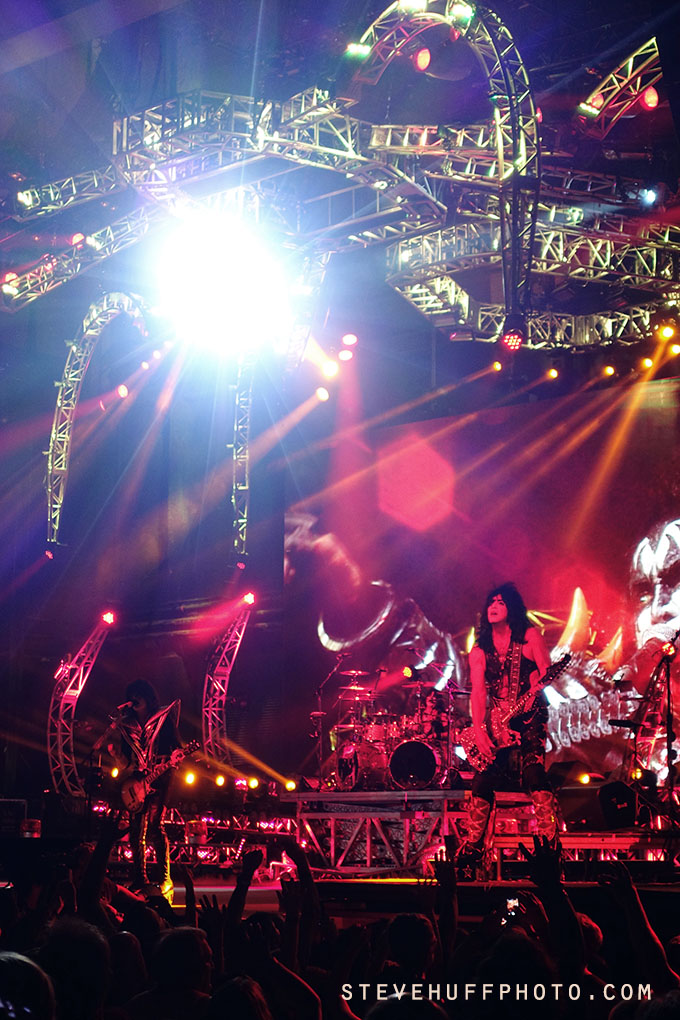
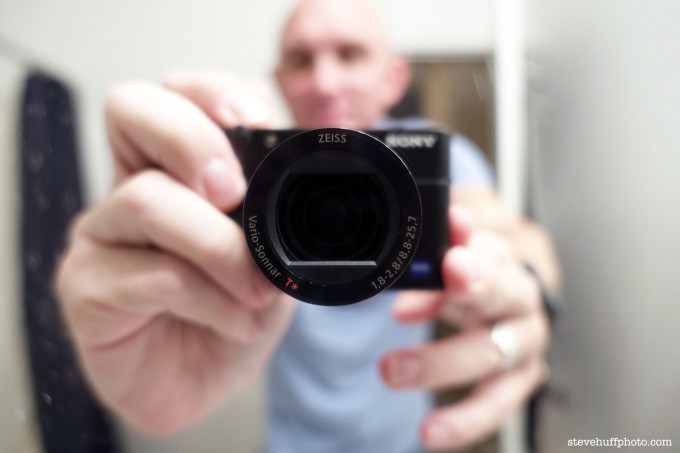
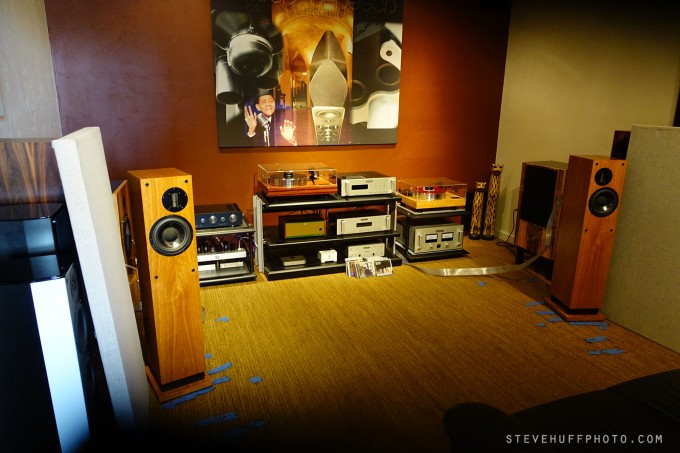
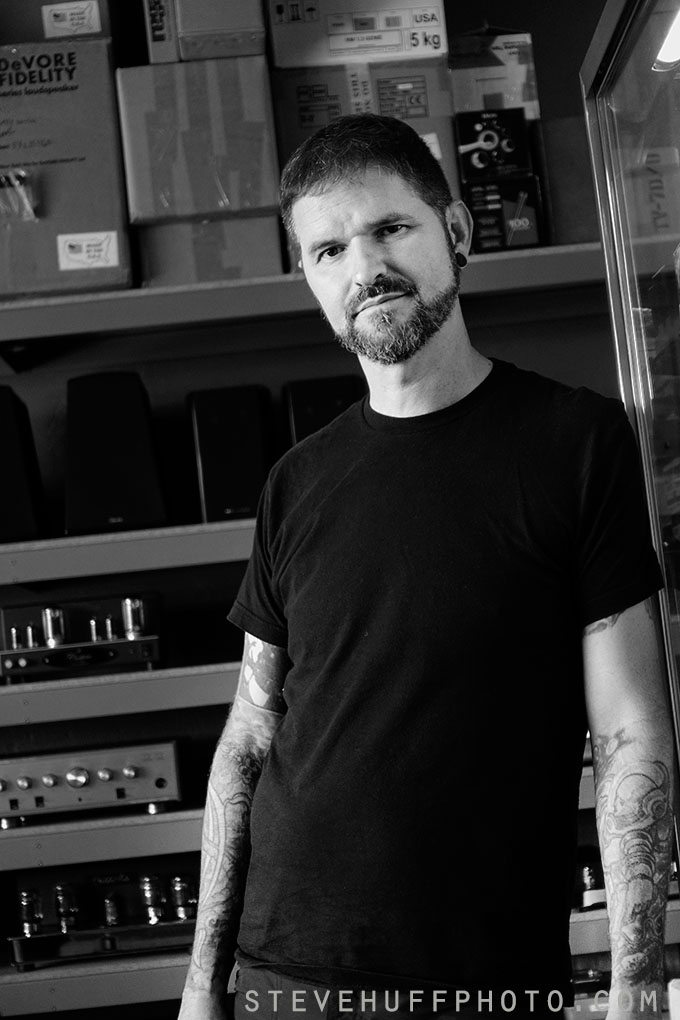
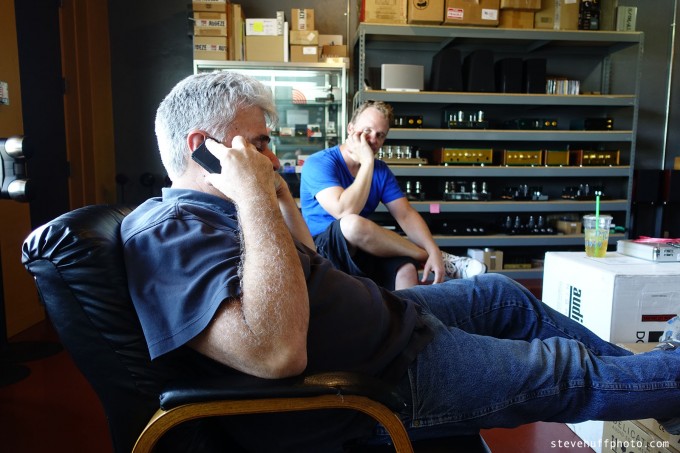
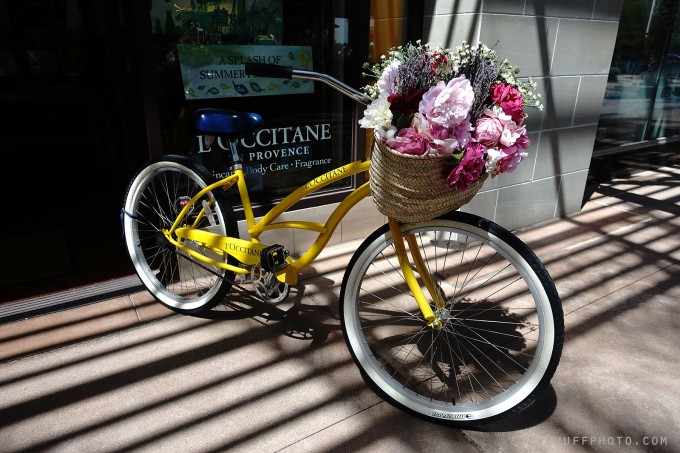

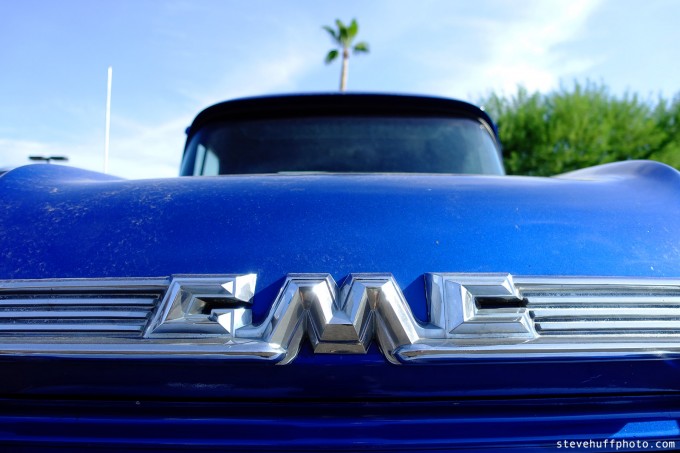
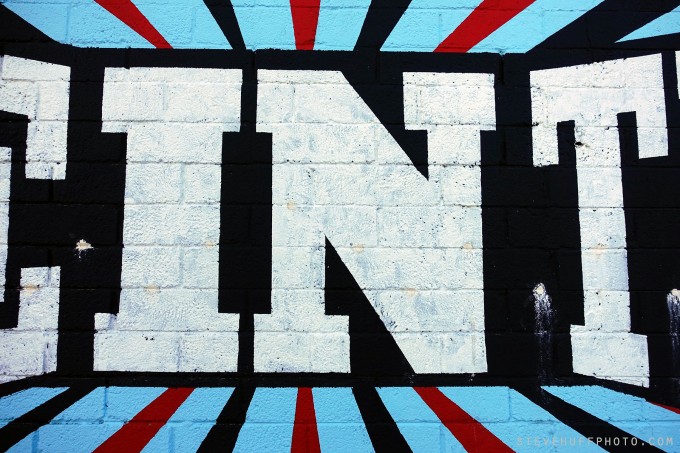
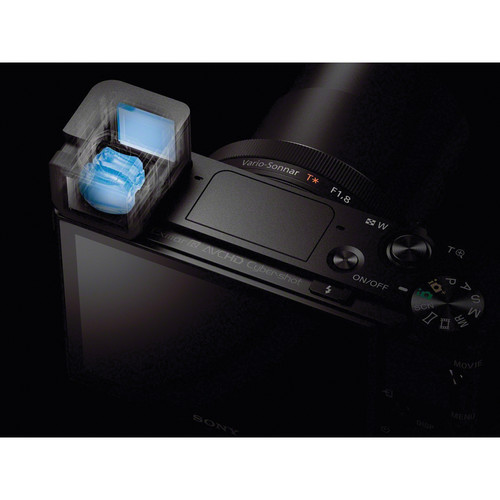
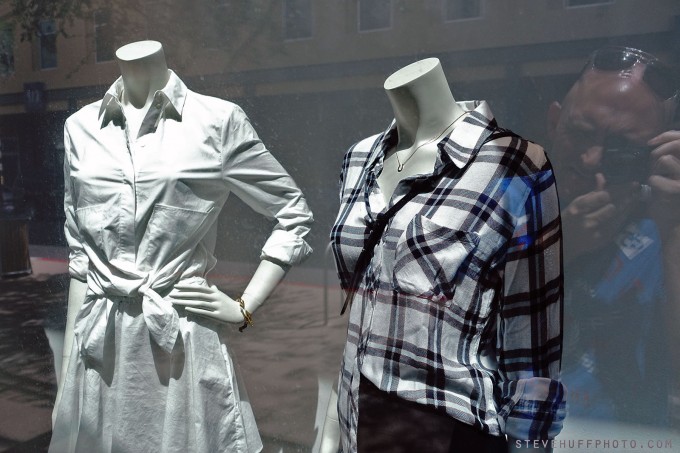
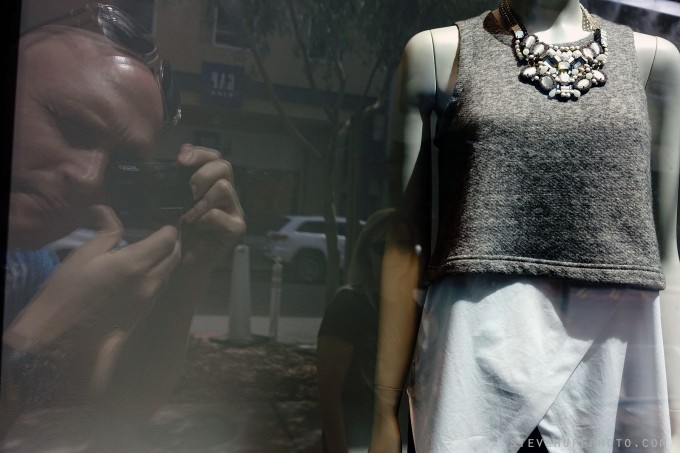


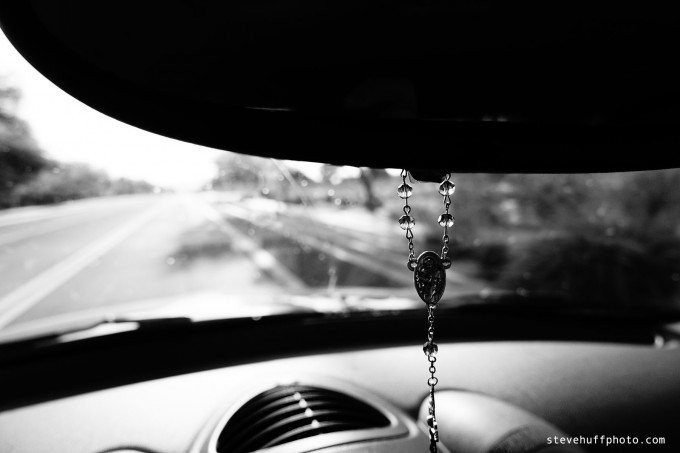
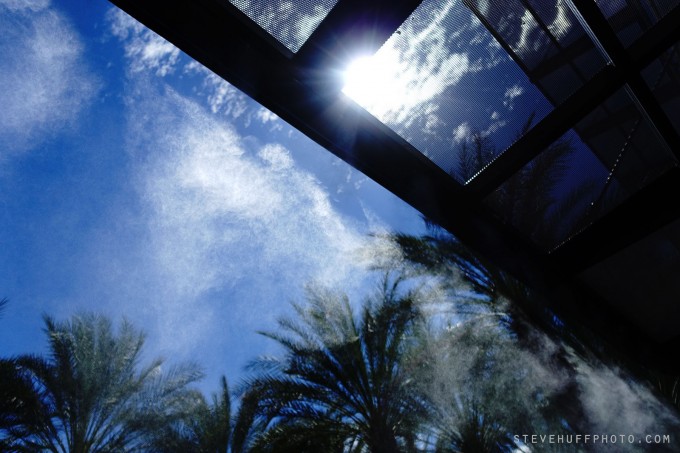
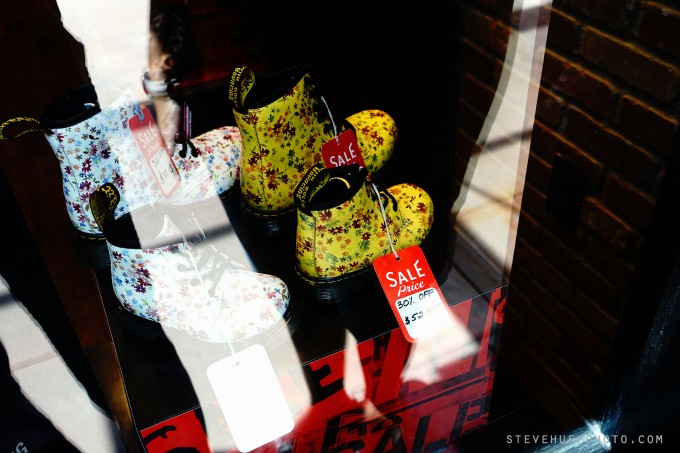
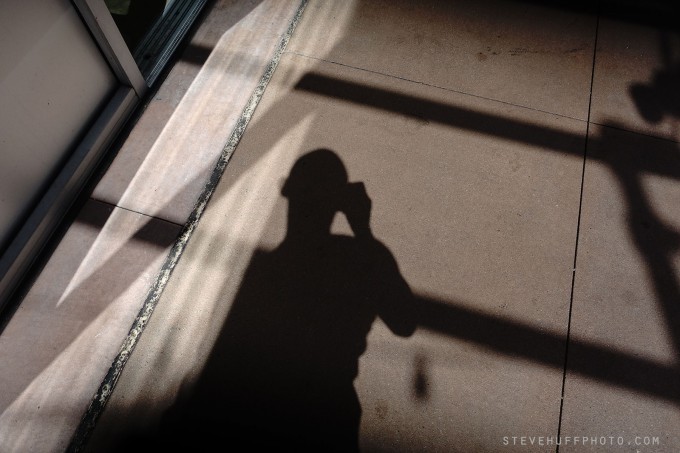

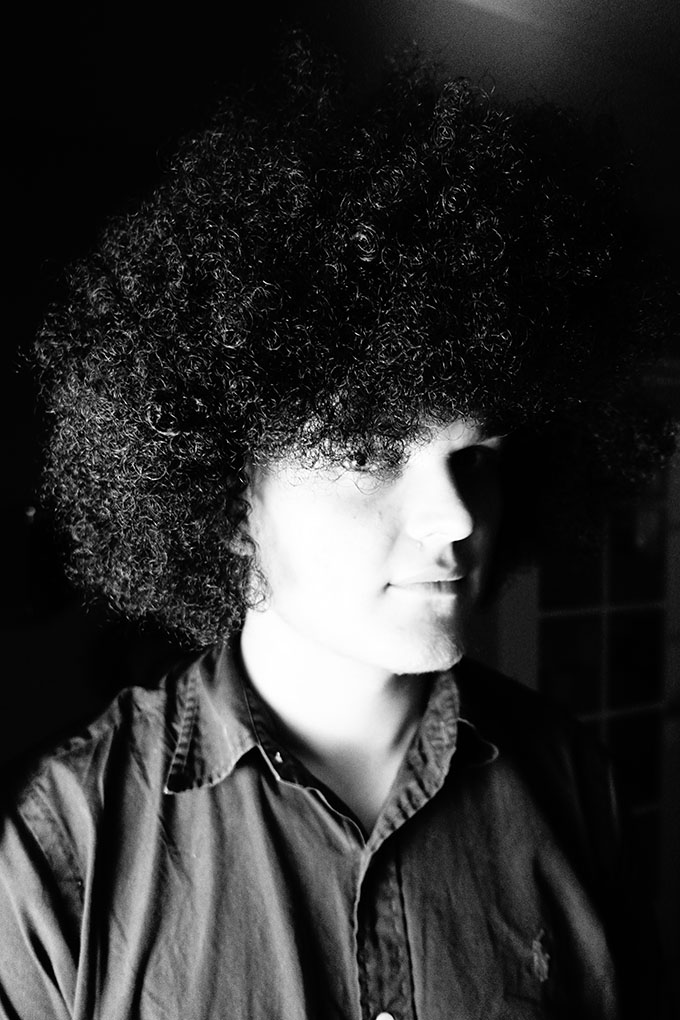
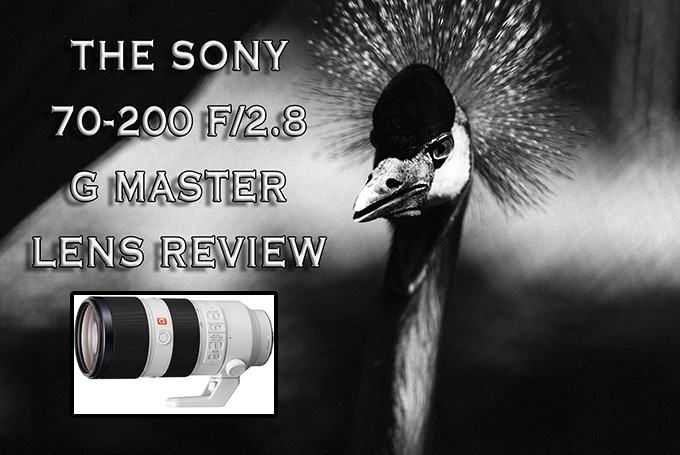
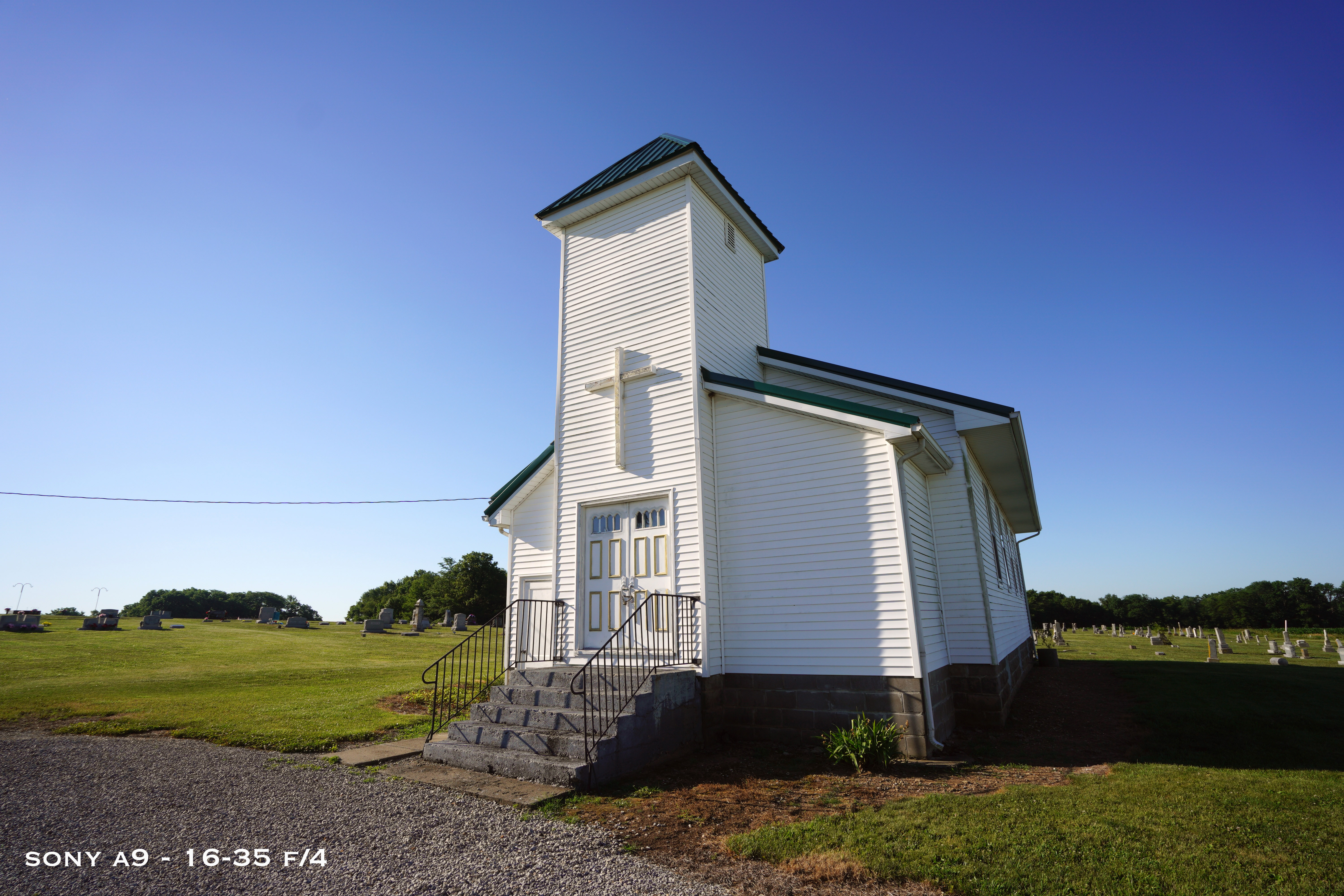
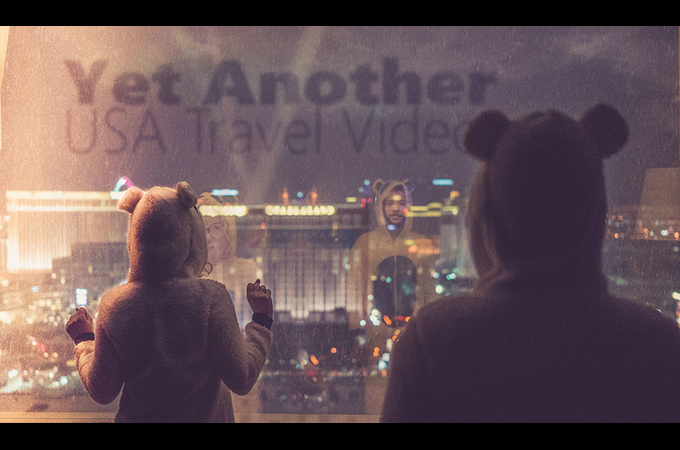
Thanks for your great review Steve (2nd reading). I just purchased a Sony Rx100mk3 for less than $550. (used-like new) from Amazon. I looking forward to using it to compliment my Fuji X cameras which I love very much. I’m a old guy and need to carry lightweight equipment when I travel and felt like the Sony Mk 3 would offer me a good compromise in size and photo quality. I mainly shot JPEG with a smattering of raw images as such I think this camera should do the trick.
I purchased the camera from Amazon used because of their excellent and no hassle return policy. In order to insure fair play for everyone I have been studying this camera on your website and various Youtube videos to determine it quirks and some settings that should help me operate it right out of the book. This way I can test it’s functionality to determine if I received a good copy ( don’t like returning anything if I can help it).
Anyways, your reviews and tips are always helpful. I sure wish I could join you guys on your upcoming trip.
like to wish you, your family, staff and the many folks who visit and participate on this site a happy holiday and a prosperous New Year.
Regards,
Howard Tyree
Hi Mr Huff! I am trying to figure out how to get the “clean” HDMI out to work with my Ninja2 Atomos. THe time counter still pops up on the display when recording onto the Ninja2 I can’t seem to turn off all the info display when it is recording as the time counter is present on both the devices. Arggghghh
-Kerry
I am not a video guy so I can not answer this one for you.
Hi Steve, I just discovered your website and thank you for making discover the sony dx100 range. I do have a question for you. I am an amateur photographer, you can check my website http://world-through-a-lens.format.com to see what kind of pics I make. I have a Panasonic LX3 and a TZ40 (for the zoon but regretted it because it doesn’t have RAW mode). I have been looking to upgrade, until today I was very close to the Panasonic Lumix LX100 but I think the Sony DX100 is what I will go for but I am not sure which model.
What do I want the camera for: I will be 5 weeks in Vietnam mixing holiday with work and photographing people in rough conditions. My style is street photography or improvised portraits.
I am looking for a camera that can give me excellent quality, and enable me to focus super fast and take pics quickly one after the other (no burst). I also like to take landscape photography.
I have read that the iv shallow depth field is disappointing but seems it has the fastest shutter speed and that also the zoom is less than vii and it is all about the 4k video which I don’t care for.
I wonder if you could tell me which one to go for. price is also an issue
PS. any recommendations on where I could sell my 2 Panasonics in 2nd hand market in the UK.
Many thanks
Id go for III if you are not into 4K. The new IV is sweet but it is more video and slow-motion upgrades. These are great little cameras.
Thanks! Forgot to say that I also take a lot of pictures when I am in Africa and Asia by just walking and throwing shots. Normally try to hide camera so people don’t realise. This means I need a very fast shutter speed to capture the moment. Do you think the SONY iv would deliver a massive difference compared to the iii?
My son bought this camera for me, and the outside black flap that closes over the lens began breaking within the first month! Then I dropped the camera once, and the camera stopped altogether. Now, of course one should never drop a camera, but it wasn’t a long drop, and it wasn’t a bad drop…but the camera is now defunct. Sony of course will not cover it under their warranty, irrespective of the fact the camera already had issues. I would NEVER buy this camera. If you drop it, the camera is DEAD. When I called the repair place I asked the repairman if many of these cameras are coming in for repair and he said, :”Oh yea, we get A LOT of these.” So it isn’t just my issue here. Whatever Sony did, it made the housing of the camera unable to withstand any (and I mean any) impact whatsoever.
I feel your pain. If you were thinking of putting it away in a drawer forever or binning it, don’t. Sometimes you can get cameras working again, and as you’ve got nothing to lose maybe it’s worth a try. Google ‘digicam dropped working’ or similar and watch some of the videos for tips. If all else fails you might be surprised just how much people would bid for your broken camera if you put it on eBay despite the fact it’s not working. Good luck.
If you truly need a pocket camera the RX100 series are great. But don’t forget about the Sony NEX3n with zoom (APSC sensor), better image quality especially at higher ISO, less than half the cost with zoom, interchangeable lens, albeit it will be in your coat pocket rather than pant pocket. The NEX3n was really an incredible performance bargain often overlooked.
YES Steve, you quite correct regarding ‘pocketable’ and other qualities for this little ‘guy’, as a word used by you for photo apparatus.
However, we (I) have a problem though? Carrying two items all the time in case of the need for a picture? As you always point, the best camera is the one you have accessable.
In these days LG smartphone maker of other things have unveiled their new G4 phone and camera with an extradural picture quality. Please read link here?
http://www.colbybrownphotography.com/gear-review-a-photographers-take-on-the-lg-g4/
All this makes it difficult to chose? Well, reading the link, I only have to carry ONE item and most likely the smartphone is in my pocket. Not both of them, unfortunately.
What is your comments to this Steve?
Well, I’m sure you haven’t checked out the LG G4 yet?
I just purchased a brand new RX100 for US$320
The store also gave me a 2yr warranty.
The price gap is too large now to buy the Mark III, especially when the image quality is more or less the same.
I know it’s been a long time but ever since reading your review of the original RX100 I’ve considered getting one. But whenever I’ve checked on eBay for a good deal – and sometimes there are ones – it’s put me off that there are just so many listed with faults or ‘not working’.
Regarding cons Steve? You should have asked for a camera house as per Richo GR with its ‘built in’ grip?
The GR fits perfectly in my front pocket.
“, the RX100 III will not and can not replace an APS-C or…”
Wondering if anyone can comment on Image Quality between this and M$# like the Panasonic GX7 (at a similar lens focal length & f stop etc)
I have the MKII. I so hated shooting without an EVF I sprung for the add-on EVF at exorbitant cost. I took this combination to Venice for a week and took over 2000 pictures. Not every picture was great but the detail captured was impressive.
Whenever I buy a Sony camera, and I have the TX20, RX100M2, RX10 and A65, I buy the Wasabi charger and 2 spare batteries combo. Never had a problem with them.
I use Picasa to organize my photos. It is amazing how you can scroll to a a photo, zoom to 100% and see such great detail. It is a way to explore your adventure in greater depth than you could have when you were there.
If pocketability is not an issue, and the add-on EVF definitely compromises that, then the RX10 is even better.I took mine to NZ for a family wedding. Didn’t regret leaving my A65 at home for a second.
Just from apure image quality pt of view: RX100III or Ricoh GR?
Hi, great review, a quick question you may be able to answer after getting mine today, I have two fully new batteries, one on charge as I type, will the camera NOT power up until the charge is full or near full, i.e. its not powering up after one hours first initial charge?
Hmm. It should power up after the battery has been charging for an hour..hopefully it powers on for you!
Price too long.
Lens too short.
I’m not paying extra for a should-have-been-included charger.
Nice EVF.
It’s just so SONY: Amazing features wrapped with the as-usually-included head-scratching ‘why didn’t they’ list. Did you hear they make amazing DSLR’s, but when it comes to lenses, you’re on your own?
Steve, I am used to full protection cases, but I do like the look of the Gariz case. Do you just use that when you put it in your pocket and when you travel? Not afraid to scratch the display? Not afraid that something might happen to the lens? Is this just for better grip (can’t see the protective value)?
The Gariz cases offer better grip, add slight height and feel really good on the cameras. They do not offer much protection so I feel it is more for looks, style and grip/comfort.
Thanks. so you happy with putting the camera like that into your pocket? Not worried about scratching or anything?
Hello Steve,
Are there photos on your reviews that show the dof at 70mm ?
Thanks !
I did not read all the com. But at the price at this day is Rx100 still à good choice ? Thank you.
Well, I read most of what y’all say so I went down to the local Camera Shop and handled one. My first thought was — this is really clever. It’s very well made, well engineered.
But holding it and using it is difficult. It is too small for me: I don’t have fingers I have sausages I can handle the Nikon VI with a grip and the ricoh GR — but no smaller.
However, looking at the rest of the superminis — nothing is as technically good or as well made right now in its price range (it is aroudn $1200 street price in NZ). It is the best of breed at present
No problem…I first bought 2 JB wooden grips (the real thing: carved, charred logo…no shiny, epoxi, varnish, silicone or swarovsky cristals…) Then I bought a Rx Mk III and applied the grip…just gain and no pain! This weekend I’ll show it to my girlfriend …and I’ll have to buy her a Rx to put the second grip to use…and we’ll happylly photograph everafter…!!!
As soon as I heard about the upcoming RX100 III, I sold my M1 before the price dropped, and pre-ordered the M3. I’m quite happy with the M3 for the go-with-me-anywhere camera. My RX1 sits at home too much. Regardless of the small size and superb image quality of the RX1, I still require a small fanny (belly) pack to carry it, so it’s just not with me unless I’m specifically going out on a walk-around shoot.
But SONY, IF YOU ARE LISTENING, and many won’t agree with me (I’m very much used to that!), here’s my dream Sony RX100 M4s: 1) 12 mp (yes, no larger) 4/3 sensor (if Panasonic can put a 4/3 in the tiny GM1, so can Sony) 2) true Olympus-style 5-axis IS, not fake IS 3) no jpeg gimmick settings 4) NO video 5) restore the hot shoe (get rid of the tiny built-in flash) 6) a fixed prime lens 7) and just to silence the people who keep complaining about lack of external charger (when a cheap one, as mentioned above, that includes TWO batteries is available on Amazon)–add an external charger and extra battery. All the space savings gained from getting rid of all of the fluff should easily enable a 4/3 chip (APS-C???) in the M4s. Anything else? Oh, maybe lose the tiltable screen. I know people like it, but it adds size, and I’d rather the size be used for internal improvements. I’ll use my phone for selfies.
…for that kind of use I would rather bring my XT1 with the “35” 1.4 or 100…
I feel “naked” without one of the Fujis, but for the casual / family photo the Rx100 MkIII is fantastic…I rarely use flash, tweaked at -1ev the fill-in is wonderful!
How about af performance compared to v1 in bright and low light. Is it on par?
Beats the V1 in both of those areas.
The link you gave for the case you liked (Gariz) it says its not available. Do you know when it will be?
Looks like they sold out..no idea when more will arrive but just keep an eye on Amazon.
I was looking at purchasing the Ricoh GR as my take anywhere camera but after reading this review am not sure. What would you use as your shirt pocket take anywhere camera if you had to choose?
You know it when you feel it in your hand? The rest is technology. I have a GR version 4 and like the size and grasp however is missing the viewfinder as per Sony and, sometimes the 24 > 70 mm eqv. lens.
Best Advice in buying a camera ever. Went in to buy the Ricoh GR as my second camera and ended up getting the Olympus OMD E1 and trading in my DSLR. It just felt right. The technology is secondary. Thanks that was great advice. Still might go back next year and get the Ricoh GR but for now I have a new mirrorless that is more portable than my Canon 70D. Thanks again.
Would love to see the EVF used on an updated RX1 it would make me part with my hard earned cash in an instant.
So after purchasing the RX100 M3 the other day..I went out and took a few action shots of my dog..catching sticks and leaves…here is a link to one..for your interest.
ISO 80 9.2 mm f3.5 1/1250
I used DMF, as opposed to AF-S as AF-S continually focuses at focus point if you move the camera around…even when your finger is not half pressing the shutter,., this would be a drain on the batttery so I tried DMF which only focuses when you press the shutter half way.,.
https://www.dropbox.com/s/lkee37mi5jzipyj/DSC00137.JPG
I have the MKII. Bought the EVF at exorbitant cost (RX1 pricing) and took it to Venice, Couldn’t be happier, Would have loved the MKIII but it wasn’t there last September. I also have the RX10, which has become my go to camera for travel and general photography.
But, if I could swing a deal I’d really like to upgrade to a MK3. The MK2 with EVF is not easily pocketable.
I’m curious if the selfie mode allows use of RAW. We shoot a fair amount of family Selfie’s and I really prefer to have RAW files.
Steve on JPG’s does the RX100 MK3 handle highlights better than the RX100 MK1.
I do not think so…at least I did not notice a difference.
Not sure. I love my Nikon V1 and really like my Ricoh GXR — the Nikon wins out for travel because it is simply more rugged. But then, if I want really good shots, i go analogue and medium format.
If and when the V1 and GXR die (which will take a while) then I would be looking for something I can throw in the bottom of a backpack — which the V1 handles (the Ricoh does not). Sensor size and glass matter more than pixel count. I think this could replace both cameras.
But not yet.
BTW it is not the price: most smartphones are around this price and they sell. I want to make sure it is rugged.
How about a crazy comparison : SONY RX100 III (50mm, b&w) vs. LEICA Monochrom (50mm)
My Panny GX1 with their 20mm is about as close to pocket rocket as I’ll get. I’ve been really intruiged by the little Ricoh as of late and Collin’s guest post on it…however Sony’s zoom capabilities is a really nice touch. Great write up, Steve.
Few people have improved on their photographic skills since version one. this is just another credit card consumer item
Just as it is with every camera, even the one you shoot with.
Ricoh GR all day long.
Great camera…but there’s a place for this for sure…enjoy yours!
how does it compare to the Leica C (type 112)??
“Best” until the Mk IV comes along and “you must buy this”. I know, “i’s still a good camera”. Yes, and so is a Mk i and II.
Sony has gone into Obsolescence Overdrive throughout its product line. Always leaving out features until the next model.
Have fun…
Hi Steve, great review. I have the originalRX-100 and love it. I get some great 13X19 prints off my 7900 printer from this little monster. My one gripe is the original model did not have the auto-ISO function when shooting in full manual. Does version III(3) have auto-ISO in manual. It so, it might just be the the impetus for me to trade up.
Both RX100 2 and RX100 3 has auto ISO in M mode.
Hi Steve, what combo did you use to shoot the cover pic with (hands holding the rx100 III)? Wanna add that the camera will turn itself off automatically once the EVF is disabled. cheers!
I used the A7s and 50 Mitakon at 0.95
Have had mine for about a week. Setting it up the way I want. Using spot meter the most and have EV Comp. dialed into the control dial with Zebras. Working well. The implementation of wireless seems weird but its my first Sony. I have a OLY EM-10 now as my main camera. This is my everyday and makes an excellent traveling companion. The pop up is small but really getting used to it and the quality of view very good. Got the Lensmate adapter for some filter and Gariz case to keep it protected. Compact shooting is a different type of style and it is becoming a real companion. I thought about the Canon G1XII…still like the camera. But nowhere near pocketable, no panny mode, no HDR and 12 mp. Using the Clear Zoom to get a bit more zoom if needed. I guess if you have a SLR this size may seem extreme, but if you are dealing with smaller mirrorless models already, this size seems proportionate to what you would consider a compact. Sony needs to give you a charger…that’s just cheap in my book. And the pay for apps. I think is a bit greedy as well. So yes, I like the company…Sony as a company not so sure.
Meant to say…like the “camera” in my last line of post.
Nice camera. But how much can you push ISO and still have decent jpgs?
Is 1600 still usable?
As I noted in a comment to “RX100 III … hit of the year”; I tried it, liked it but found that while the EVF is a great addition beware the eyepiece is a bit “touchy”. When the EVF pops up you also need to pull out the eyepiece. I wear glasses and they occasionally bumped into it which caused the EVF go out of focus. I had to pull the eyepiece back out to get the EVF back into focus. Very annoying!
Great review of a truly great little camera. I had purchased an RX100 Mk1 when they were being blown-out about a month before the Mk3 was announced. I loved the Mk1, but missed an EVF. I “traded up” to the Mk3 SOLELY for the added EVF, and I am more than happy with my decision – the EVF takes the RX100 to a whole different level! I also like the faster lens, even though it’s a little shorter on the long end.
My son just left for a cruise to Bermuda and, even though he spent the last few months (and thousands of dollars) putting together a very nice Canon 70D kit for the trip, I’m betting that the RX100 Mk3 I let him take along will be the star of the trip! 🙂
Steve – Any recommended settings that you’ve liked on the RX100iii (such as tweaking contrast/saturation)? I didn’t realize there was a “clear” mode on it — just knew about vivid.
I just experimented with most of the JPEG settings, nothing special.
There is one downside to this new lens. At the 28mm-35mm (the most widely used fl) the widest aperture is f2 whereas in the older models it is f1.8…
Great write-up Steve!
My RX100 (version 1) is always with me.There’s a lot to be said for that.
I’ve captured so many interesting moments that I otherwise wouldn’t have – simply because I had the RX100 with me, in the front pocket of my jeans.
That old saying “F8 and be there” applies today as much as it ever did (at least the principal – that ‘being there with your camera’ is far and away the most important thing eclipsing all other technical details).
I had the opportunity to handle the RX100 M3 a while ago and was very impressed. I’ll likely upgrade to it in the near future though am also considering (instead) continuing to save for that “something very special in the high-end arena from Sony” that’s likely to come very soon… As always, too many cameras, not enough $$$ 🙂
All the best
-S
I have the RX100 and while the RX100iii looks interesting I will wait to see what Panasonic announces at Photokina with the LX8. It is suppose to have the 1″ sensor from the FZ1000. Then there is also the fixed lens m43 camera that is coming too. I think Sony will have a lot more competition this time around.
Hi Steve,
Thanks for the nice review!
I would like to suggest another ‘camera for everyday shooting’ that is comparable in price: the (second hand) Leica M8 + cheap lens (I have a f3.5 50mm of the previous century).
Keep on the good work,
Best regards,
Peter (Antwerp, Belgium, tumblr: http://petervermeulen.tumblr.com )
“When compared to a Nikon V1 or V2 or V3, the RX100 series presents images in a smoother way, reminding me of a larger sensor without the grit.”
This is an interesting observation, since I’ve noticed that V1 “grittiness,” but consider it a positive, giving it a unique film-like quality.
I have one observation on these sample photos, especially the ones with the hi-fi store dudes and the fountain scene. It may be the photos or my monitor, but it looks to me that there is a lack of mid-range tonal gradation.
Here’s what I mean: In the analog days, you could get a roll of panatomic-x, which had amazing resolution, low grain, but relatively high contrast. Or, you could get a roll of tri-x, which lacked the resolution, had noticeable grain, but had very nice tonal gradation under normal development (and even better when pulled).
In the output of smaller point and shoot cameras, such as this Sony, from the sample photos it appears that the mid-range difference may have been sacrificed for other things.
I don’t know what those other things are. But in photography of course every benefit is a trade-off for something else, and since you’ve seen more output from the Sony & the v1, I’d like to get your thoughts on the mid-tones.
Sandstorm in Phoenix AZ today, it’s time to take out the RX 100 III to obtain a little grain similar to V1
Damn you Steve..I read this review today and went out and bought it! 🙂
Earlier this year I bought the OMD EM1 (yes, your fault again)
I thought it would be good to have a good pocket size camera (I can’t stand iphone photos)
I’m travelling next week and want to travel light..The RX100 M3 will be coming with me..I hope I don’t regret it
How many shots did you get on one charge? Is it better than the original RX100?
Steve,
You had long words, big samples for such a little camera’s review.
Must be this ‘little guy’ entertained you much. Has EVF, swivel Lcd, wifi, fit into your pocket, joy to use, punchy color beat your M240 sometime..wow
How is the macro capability? MFD is down to 5cm, but I don’t’ see a max magnification (and I obviously don’t know how to calculate it based on focal length).
I was looking at the RX100II a few months ago, and the lack of close focus was the one deal breaker. Ended up with a several year old Panasonic Lumix LX7, which practically focuses until the lens is touching the subject. But it doesn’t have an articulating display, much less a popup viewfinder, and in sunny environments, you really can’t see what you are taking a picture of.
Have been using it for a month now and while on the features side it looks great I just don’t like the handling. On such high end body why is it still that one has electric zooming instead of manual (awful imho) why the thing shuts down when flash and evf are closed is so annoying as well. In top of it there are three usual strange things like you can’t take stills in movie mode – why and what for does it have separate buttons for recording movies and shooting stills??
I’m surprised that this review is so positive despite Steve’s usual focus on how the camera is feeling in use versus the simple feature set.
Not sure what you’re talking about. My RX100m3 was supplied with a dedicated charger.
It comes with a USB cable and plug and the battery must be charged with the cable connected to the camera unlike when they used to put an actual battery charger in the box.
Nice…..but do we reeeeely need “smile detection technology” on these cameras?? Silly technology tricks for the sake of silly technology tricks.
“When things get too easy people get sloppy. And sloppiness is not a good thing in photography—even though photography is fairly simple stuff. When it was non-digital it still took a little bit of effort and thought. But now I think a chimpanzee with a digital camera can get pretty good results as well, but at least visible results. And I think that is the problem. Too easy, too much, and maybe not too much thinking behind it.” (Elliot Erwitt)
Chimpanzees used to get great results with 35mm, too. Really came down to the photographic skill and artistic vision of the individual chimp.
😉
I guess the smile detection is really stupid thing. But hey! What do we have here!? Oh it is switch off button;) I own Rx100 mkI and exchanged it from nikon d300 as I realized what do I need the camera for;) Anyway what I wanted to say is that Sony is doing great job being on both pro and amateur sides. It does even more! It envolves unexperieced user to know more about the photography;) I wouldn’t blame them for that…
Yes, that’s always the argument. “If you don’t like it you don’t have to use it”. But the mere presence of something like that speaks volumes to me. Of course, I don’t have to buy the camera. I’d just like people to acknowledge that for decades prior to these types of cameras, the masses went on vacation, did snapshots of their families and so on. The argument these days is “I don’t need a professional camera…I just take pictures for fun”. Yes, and others like you did just fine for 80 years without smile detection software, which will soon be seen as a ‘necessity for good picture taking’.
Hi Steve,
How is the lens and the image quality between the mk1 and mk3…? I love the mk1, but I do notice some lens flaws on the wider end. Tks.
Hi Steve!
For me it seems that there are much and to hard/heavy shadows. You mentioned that it naturally lacks Dynamic compared to a FullFrame. But what is your opionion compared with a Nikon V1 with Active D-Lightning enabled?
I am not sure, but for example the espacially the pics with the colored kids in the sunlight seem to me very unfortunatly and I guess the Nikon V1 would save much more details. But maybe the sun was only quite hard, too.
What do you think?
That is due to the mode I had the camera on. The water shot of the kids, that was in CLEAR mode which makes your images look like that. It’s just a JPEG mode. The RAW file is very different. To me, the IQ of the RX100 series is a notch above the Nikon 1 cameras
The new RX100 iii is a testimony to Sony’s understanding of market needs. It is the ultimate pocket camera and makes a great companion to my ever faithful Leica M3. Now all we need is for the mighty RX-1 to inherit the same pop up viewfinder!
Couldn’t agree with your assessment more Steve. I love this camera and have found that when I have it in my pocket I never use my iPhone 5s. I got one those wasabi power 2 battery kits plus wall charger from amazon for like twenty bucks totally worth the investment.
It should be said that you can get an APS-C sensor in the GR in about the same size. You’re losing the zoom and EVF, but you’re getting better IQ. To me these are the two best PS options and you really can’t lose either way.
The EVF is a fantastic idea, but no dedicated battery charger? As a travel camera that’s a deal breaker for the prolific snapper. Not so much for the others who take just a few shots, but will those types want to part with $800?
You just need a USB to wallplug adapter (or laptop) which you’d probably be traveling with anyways for your phone and other gadgets. I actually didn’t read it, but I uses micro-USB like the RX100 did in which case most phones (unless you’re on Apple) will use the same plug. I wouldn’t it a deal breaker at all.
I picked up the original RX100 for my Brazil World Cup trip and I only missed having an external charger once. I normally just connected it to my laptop to charge overnight. It was slower then if you were using a dedicated charger. If you want a faster charge time, I believe there is an external charger you can pick up for 25 or 30 USD.
BTW, I was was extremely happy with the results I got with my “old” RX100. For a “keep in my shorts pocket carry everywhere camera”, you couldn’t do much better. Of course when I wanted to do some more serious work, I pulled out the OMD E-M5.
huh, it’s weird to see the spectrum cat lord here……
You say, “I wouldn’t it a deal breaker at all”. As I repeat, “Not so much for the others who take just a few shots”.
So the next thing to expect from Sony is the RX-1 M3 with EVF?
A dedicated charger is not a must have. One can easily slip a spare battery or 2 in the pocket and that would be quite sufficient for quite a while (or for quite some shoots). While traveling I always bring a power bank which can charge the RX100 and many other devices at the same time.
The way Sony’s R&D is going and, more importantly, what Sony actually puts into production, who would bet against it?
Just took my new RX100 II on a family vacation to the beach in France, and it was great. Just plugged it in one night to my iPhone charger with included USB cord and it was good to go for the whole week.
Dedicated charger really not an issue – it only prevents you from simultaneously charging second and third batteries.
This is a Sony thing. My A7 did not come with a dedicated charger, so I bought one from Adorama for my second battery and it works amazing.
Nick,
But my Nex 5N did. And as it uses the same battery as for my A7, I can easily put it to use for either camera.
I’m loving mine. I think that the RX100M3 paired with the X100s is the perfect light-weight travel set for me.
Nice review, seems like a great camera! How would you say it compares with something like Fuji X100s ?
What !!! X100s is a more expensive camera, fixed at 36mm (in 35mm equivalent) and more important, a APS-C sensor that is 4 time as big in area. Though I like the retro look of Fuji X100s, I already have my splendid A7 at home and the RX100 would be the next best thing to me
@Steve Huff
Thanks for the great review. Just curious to know how this compares with Ricoh GR, which is equally pocketable, has a larger sensor, but with limited focal ranges 28mm – 35mm (crop mode)? I have neither of these cameras, but was considering something small with better IQ than my smartphone. I can live with the limited focal lengths, as I mostly shoot primes, but I’d love to hear your thoughts on both in terms of IQ, AF and general ease of use. Thanks again, keep up the good work!
Cheers Luke
It is actually magnificent. A thing terrifies me however, when I fold up the evf, it switches off the camera , it drives crazy to me.
There is workaround for EVF and switching off the camera. You simply press and hold power button while you press EVF down, and bam, it won’t turn off the camera
And Sony gets my money again. Thanks for the great review Steve, I’ll be ordering this next payday.
I own the RX100ii and that camera made an outstanding replacement for a NEX7 and pancake zoom. This new one will take away the long focal lengths, but in my last few trips I’ve wanted 24mm far more often than I’ve used 100mm, so I think its an excellent trade.
The EVF will be nice, but honestly the fast aperture is where I think this new camera really stands out. The excellent 20MP sensor at f/1.8 to f/2.8 will really make this camera shine indoors or at night. My RX100ii has the same sensor and ISO 1600 is quite clean, with ISO 3200 still nice in B&W. With the new lens, staying at ISO 400 indoors and 800 at night is feasible, and the files are much better than “quite clean” at those lower settings.
Can’t wait for this one to be delivered.
Great and thorough review Steve! Thank you!.
A very tempting camera but as a ‘secondary’ P&S the $800 price tag seems a little out of the realm of practical, especially with so many quality M43 bodies out there. I feel like it should have been targeted at $599. I think they would have sold twice as many and made up for any profit loss in the price cut.
This camera is about being able to slide it in your front pocket, having it with you EVERYWHERE, and without having to strap it up. This is what it offers over Micro 4/3. Sure, you can get a Micro 4/3 body for $800 but it won’t fit in your pocket. Even the teeny Panasonic, with a lens on it you can not fit it in a pocket and it will not have an EVF. There are pros and cons to everything. Sony has always sold this line at a premium. The Version 1 can be had for $500 but you miss out on a few things. For $799 it is a tad expensive but you will not get this camera or features (tiny body, 24-70 1.8-2.8, EVF, tilt LCD, etc) in anything else for $800. So all depends on what one wants in a camera. I’d love to have one but I do not need it as being pocketable is not a requirement for me. 🙂 For some it is though. Some also do not want to mess with changing lenses, so the RX100 is for those who want an advanced and very HQ P&S.
I agree 100%. I had a Panasonic GM1. It is next to useless outdoors in bright light with it’s non-tilting LCD and lack of EVF. Everything else m4/3rds is much bigger. To top it off, the sensor in the RX100m3 is every bit as good as any m4/3rds sensor.
I wanted to traded my RX100 Mk3 for a GM1 but then I realized how much bigger it’ll become once I add the lenses. the 12mmf2.0 is too large to fit in the pocket and the len cap lens IQ is too poor.
Simple answer with the GM1 is to simply put the lens in your other pocket. But i will wait till Panasonic gives up a gm1 with a tilting evf or pop up evf.
yea, I have both, and I just take the GM1 with the 12mm f2.0 on a belt clip for art / personal shooting, when I’m free to miss a shot. The RX100iii comes when I’m on a date, with friends, or on vacay, and I don’t want to miss those memories. With the Sony, you always have the EVF and different focal lengths at your disposal, and of course, selfies. Er, like … group selfies of course!
Hi Steve. You said “Keep in mind, the RX100 III will not and can not replace an APS-C or full frame camera (get the same results) as you just do not get the dynamic range, ISO performance…. with the smaller sensor RX100 III.”
According to DXO it’s DR is 12.3 which is better than ANY Canon DSLR (best is 6D at 12.1) but not as good as any Nikon (worst is D3300 at 12.8). Same score as OMD-EM10 (12.3)
.
RX100III low light score is 495. OMD-E10 is 884, Canon 70D is 926. Nikon D330 is 1385.
Overall sensor score is 67, OMD-E10 is 72. Canon 70D is 68 (6D best with 82), Original X100 is 73. The worst Nikon is D3300 with 82 (best is D810 with 97!!).
HaHa..can read you are a Super Nerd. The practical results is what counts at the end of the day.
Regarding comparison of sensors, Steve Huff also mentioned this in his report, so no worries!
So are you going to keep this one???
Thanks a lot for your review. I was on the edge of buying the III because of the Viewfinder and the other specs. But you helped me a lot with the decision not to buy the cam. It´s just because of the blown out highlights which i´ve never seen that strong on my Nikon V1. The pictures, despite being very sharp and with a high clearity it lags the 3-D-Pop of my other small cameras, including the V1 especially in B/W jpeg.
Maybe it´s not fair to the Sony because most of the time i shoot raw. Maybe the highlights could be preserved in Raw? And with a little work it could have a more unique look? The V1 for sure has, and i trust you that the Sony is the better cam.
By the way the most unique and quality pics are those i get from my Sigma DP1x. But it is a torture using that cam every day.
Greetings, Ingo.
Oh the RX100 III has much better DR than the Nikon V1, trust me on that. Many of these JPEG’s were shot in modes like CLEAR and VIVID with DR turned OFF. The V1’s DR is not up to the RX100 III. Shoot RAW and these blown highlights you see will disappear.
So i´ll try it when there is an opportunity in my area. At the moment i´m much interested in the Sigma DP3 Merrill. The price has come down to a level it´s hard for me to resist.
But later i will give the RX100 III a try, even when it´s hard for me to trust a consumer orientated Company like Sony where Smartphones, TVs and Audio are more important than Cameras. But i´ve read so many good reviews about Sony-Cams including your opinion i think you convinced me to have a look.
Thanks, Ingo.
Nice camera you got there, a shame about the price:performance ratio.
There is a heck of a lot of choice for today’s photographer at a a whopping $800 price point, and that’s even if we just limit it to new gear.
Size matters regardless price for the Sony III
Stig, what is it specifically about the size that causes the price to be higher? Which components are specially minitiaturized and hence higher cost compared to other cameras in the $800 price range?
The objective was to make the camera SMALL and a little too small and I’m thinking length of the body, 102 mm, versus the Richo GR, 117 mm, which is more ‘grasp friendly’, however still pocketable. A mistake by Sony according to me.
What can you save in money making a thing small and still high quality? Material it is. Comparison, wristwatches, cars et cetera.
I have a Porsche Sports car which cost as four ‘normal’ family cars and it’s small in this context.
The evf and ND filter are worth it on their own having had all three camera’s I am over the moon with this one. I’m I spent a month in Japan with version 1 and it provided excellent pictures,the RX7r sits at home more because the 100’s sit on your belt looking less like a tourist
You really have to handle this Sony to see how cool that pop up EVF is. I was really impressed. But, I don’t need a camera this small. As I always take a camera everywhere I go (I feel naked w/o one) I do not need a pocket camera. I like a bigger body, I find them ergonomically superior and easier to use. The Sony A6000 right next to it at the store would be more my thing, with the better and bigger APS-C sensor. And bigger and better EVF.
For a pocket camera, nothing out there compares to this Sony.
I didn’t upgrade from the original to mk2, but this one is tempting. -not for the evf for me but the brighter lens and built-in ND filter.
Well well well, after reading all these superlatives I’m thinking Leica T?
If I want a prestigious camera, redesign the Leica T and take the complete package from Super 100. Exclude the Sony 24>70 zoom lens and still use the camera as Leica intended, by swapping Leica and other lenses to the house
Regarding the size of Super 100, I would have prefered the size of Richo GR and its grip. Still Super 100 can fit into my front pocket or shirt pocket with a slightly longer house.
Talking Leica T again, this camera is a disappointment from other aspects as well. Another story.
The superlatives should be put in a context: the context that is pocketable cameras. The Leica T is a completely different camera.
I agree however the smart solution with the viewfinder as per Sony and flash is missing for the T. Don’t understand the Leica people? Their ‘loose’ viewfinder is better technically however bulky and not comfortable for ‘ordinary’ people.
I wouldn’t be surprised if Leica some day will unveil a similar design as Sony?
Also, hopefully, the Sony company will extend the Super 100 house with at least 10>15 mm as Richo GR? The Leica T house is great.
Great review Steve, I’ve been waiting for this one! But would you upgrade if you had the mk2? This is the question I’m asking myself. To have an EVF would be great but is it worth upgrading for?..
Well, all depends on if the EVF is worth it to you. For me it would be, it is just a finished product. Feels great.
Great review Steve! Love the Kiss photos. That 1.8-2.8 range had to make a huge difference in it’s usability in that situation as compared to the original RX100. Ordering mine now.
Hey Steve. I’m glad you really give a camera a thorough test drive before writing it up. A lot of sites have written about it but superficially. So I don’t mind if you take your time:)